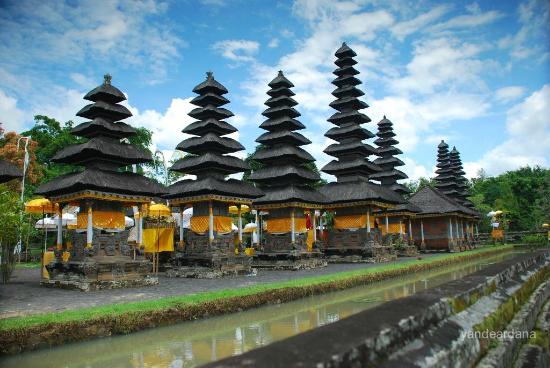Temple in Bali

Many people have wondered over the recent decades how traditional
Balinese culture
has been able to maintain its integrity, even the flourish in
the last century, while so many other cultures have lost their particular qualities, becoming absorbed in an
increasingly homogenous mainstream. We think the answer can be
found in the temple ceremonies which enliven and give definition
to Balinese life.
The temples themselves are marvelous examples of religious
architecture, richly adorned with carving and beautifully situated
within their various landscapes. The specific architectural styles
change around the island, from the simple isolated shrines at
the tops of mountains, to the massive complexes of glittering,
carved shrines and pavilions in the heartland, to the mysterious
and sometimes frightening temples near the beaches.
As interesting as they are for pure architecture, a closer
look shows how they differ from the majority of the world’s
religious architecture. Balinese temples mainly serve to create
and define space. They are predominantly made up of walls, steps
and gateways
which enclose courtyards of differing levels where the various
shrines and pavilions are located. The temples create spaces and
make these spaces sacred, places where people and their gods can
meet.
Rarely do the temples call attention to themselves. They are
more clearly seen as grand stages where the people invite their
gods to descend to be entertained and worshiped. The gods, in
turn, speak through spirit mediums to give advice or criticism
and to correct what has gone askew within the village or family
clan.
To understand Balinese religion
by studying the temples would be like trying to understand a play
by Shakespeare by studying the stage where it was performed. The
temples are surely elegant in themselves, but their real beauty
lies in how they are able to facilitate the activities of the
ceremonies where the Balinese people reenact their own stories
and remind themselves who they are.














